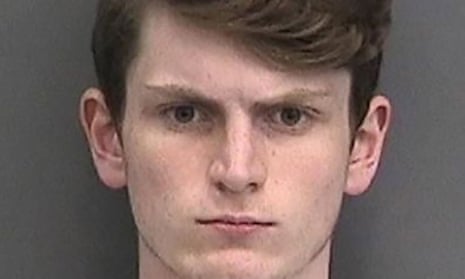There are lots of ways to be a disaffected, disenfranchised young man. You can spout anonymous abuse online. You can shoot up a school. You can bomb abortion clinics in the name of being pro-life. You can kill black people peacefully praying at church, in the name of white supremacy. You can murder teenagers singing joyfully along at a pop concert, in the name of Isis and Allah.
What you are called, when you do those things, varies. Sometimes you’re a criminal. Sometimes you’re a terrorist. Sometimes you’re a mental health statistic. How you are treated, when you do those things, varies. Sometimes you’re headline news around the world for days; you make an ignominious mark on the history books. Sometimes you’re a few paragraphs in the local papers, and barely make it into the national press.
There are a few key variables which determine what you are called and how you are treated when you commit a deadly act designed to cause widespread fear. Namely: how many people you killed; where you killed them; whether you shouted “Allahu Akbar” as you killed them and the colour of your skin. The whiter your skin, it seems, the more likely you are to be classified as a criminal rather than a terrorist.
In 2015, for example, Dylann Roof, a 21-year-old white supremacist, shot dead nine African American worshippers in a church in South Carolina. He was convicted of 33 federal charges, including murder and hate crimes, but he was not convicted of terrorism. A case of one man’s white supremacist is another man’s terrorist is another man’s “smart, quiet child who ... just fell off the grid somehow”.
Which takes us to Devon Arthurs, an 18-year-old white supremacist turned Islamist. Arthurs is a fascinating, if macabre, case study in the way we talk about terrorism, and the arbitrary lines that often seem to get drawn between ideology and pathology.
Last Friday, Arthurs allegedly held three people at gunpoint at a Tampa smoke shop. After being arrested he apparently exclaimed “Allah Mohammed!” and told police: “This wouldn’t have had to happen if your country didn’t bomb my country.” Arthurs was born in Florida.
As it turns out, the night was just warming up. Arthurs then directed the police to a nearby apartment complex where they found two of his roommates. They were dead. According to a police report, Arthurs had stabbed his former friends because they were neo-Nazis who “disrespected” his new religion. Also, he thought they were planning to commit acts of domestic terrorism.
The FBI and Tampa police department found bombmaking equipment believed to belong to Brandon Russell, a third roommate. Russell is a Florida national guardsman and, as well as reportedly keeping explosives in his garage, kept a photo of the Oklahoma City bomber, Timothy McVeigh, who killed 168 people, in his bedroom. He was arrested on Sunday and charged with “possessing an unregistered destructive device and unlawful storage of explosive material”.
According a recent report, A Dark and Constant Rage, from the Anti-Defamation League (ADL), rightwing extremists have been responsible for planning at least 150 acts of terror in the United States over the past 25 years. They’ve killed 255 people in these attacks and injured 600 more. White supremacists and anti-government extremists are the biggest subset of rightwing extremists (which also includes groups such as anti-abortionists and anti-immigrant extremists) and are responsible for 85% of these incidents.
However, as the ADL points out, while “rightwing extremists have been one of the largest and most consistent sources of domestic terror incidents in the United States for many years”, this fact “has not gotten the attention it deserves.” What’s more, “it has garnered far less notice than … Islamic terrorism”.
Can you imagine how much more press Brandon Russell’s basement full of explosives would have received if it had belonged to a man called Mohammed with a picture of a 9/11 bomber in his bedroom?
Rightwing terrorism doesn’t just get less media attention than Islamist terrorism – it gets less attention in policy. As the ADL report notes, the US still doesn’t have a federal domestic terrorism statute and “federal spending on training law enforcement on issues such as rightwing violence and terrorism is extremely low”. This is clearly ridiculous.
If the statistics don’t show how ridiculous it is, Devon Arthurs, a white supremacist turned Islamist who allegedly murdered his former neo-Nazi friends thinking they were about to commit acts of domestic terrorism, does.
Arthurs is a timely reminder that the road to extremist violence can take many paths but it often starts from the same place: notions of threatened masculinity and feelings of worthlessness and humiliation.
Arthur’s metamorphosis from a neo-Nazi to an Islamist should remind us to eschew the narrative of a Clash of Civilizations that is often pressed on us and, instead, interrogate more universal sources of anger.

